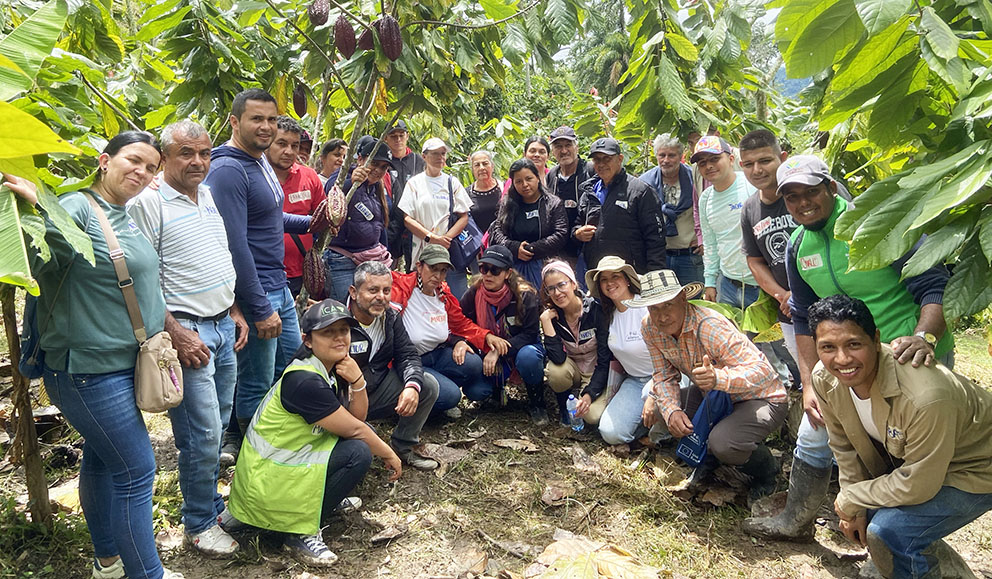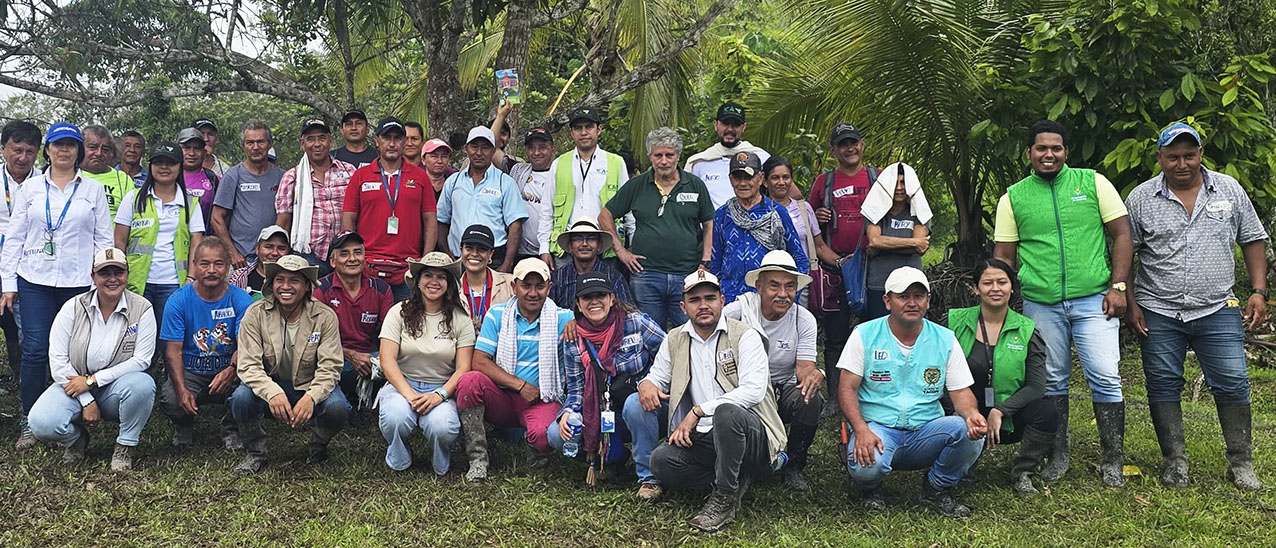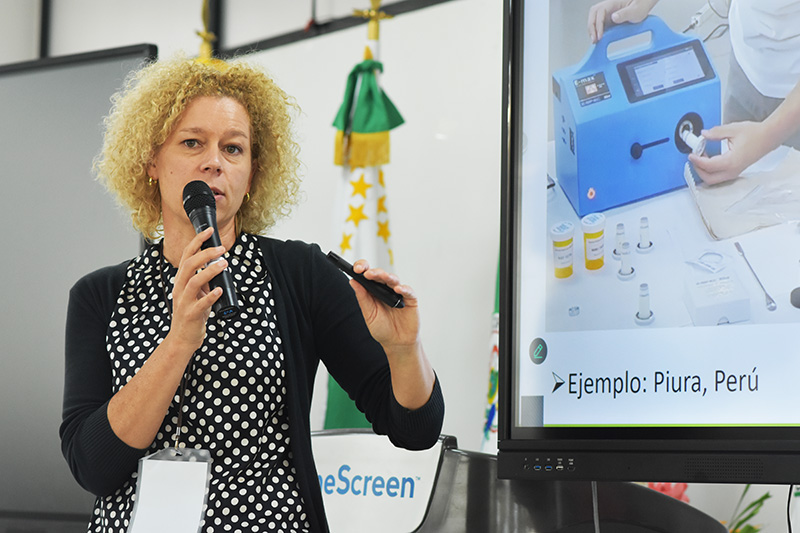From May 5 to 6, an event was held in the municipality of Yacopí, Cundinamarca, to share the results of the Clima-LoCa project. More than 90 farmers and cocoa producers participated in this meeting, where the results of cadmium content mapping in soils were presented. In addition, the findings of the study on cadmium accumulation in different cocoa genotypes were shared, and key issues for crop management were addressed, such as soil health, clone selection, pruning techniques, and strategies for pest and disease control.

Photo: Alliance Bioversity & CIAT.
The Field Day was co-organized by Fedecacao and Agrosavia, in collaboration with the Alliance Bioversity & CIAT , as part of the dissemination activities of the Clima-LoCa project. This initiative, funded by the European Union in Colombia, is implemented by the Alliance Bioversity & CIAT and its partners in Colombia, Ecuador, and Peru.
Regarding this work, Caren Rodríguez, principal investigator at the Colombian Agricultural Research Corporation (Agrosavia), highlighted:
“We have studied cadmium accumulation in cocoa in the region, as well as the effect of the environment on the presence of this heavy metal in the plant. Now, producers recognize that climatic variables, physicochemical characteristics of the soil, and agronomic management are key factors in designing strategies to mitigate cadmium in cocoa beans and adopting sustainable crop management plans. Working with the community of Yacopí has been an enriching experience; we are very pleased to have had their collaboration.”

Photo: Alliance Bioversity & CIAT.
In its final year of implementation, the Clima-LoCa project will continue to disseminate the main findings from the last five years of research to various stakeholders in the sector: cocoa producers, decision-makers, technical teams, and academics. The aim is to strengthen the cocoa value chain in the Andean region.

